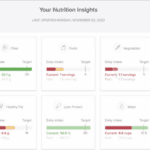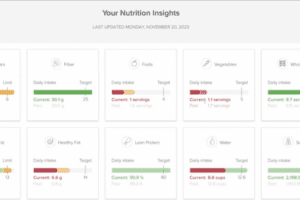The following is a guest article by Steve Lazer, Global Healthcare & Life Sciences CTO at Dell Technologies.
One rapidly advancing trend in healthcare and life sciences is the shift from inefficient, expensive physical models to digital models tested in the virtual world. This is especially critical when time to value and cost are of the essence, as in the case of a global pandemic. One way to address this challenge, is to create a digital replica of a physical system or environment, accumulate data with sensors and collectors to monitor performance, and identify anomalies and trends to predict problems before they occur. This is known as a digital twin.
The concept of a digital twin is not a new one. In fact, it has been around for several decades. However, it is only in recent years that the technology has advanced to the point where it is practical and cost-effective to create digital twins of large, complex systems. With the rise of the internet of things (IoT), it has become much easier to collect the data needed to create a digital twin, and to use that data to optimize the performance of the physical or anatomical asset.
In recent years, digital twin solutions have become increasingly popular across a wide range of industries, and Dell Technologies is one company that has been at the forefront of this trend, offering a range of digital twin solutions that can benefit businesses in numerous ways.
A little more than a decade ago, the concept of digital twins in healthcare and life science research may have sounded more like science fiction than a viable model for research and development. However, with COVID-19 rapidly accelerating the implementation of digital technologies, the adoption of digital twin in healthcare and life sciences has accelerated in recent years. So much so that, according to Gartner Prediction, by 2025, 25% of Healthcare Delivery Organizations will include formalized digital twin initiatives within their digital transformation strategy as it enables the development of digital representations of real-world assets. The benefits of modeling biology with Digital Twin are numerous:
- It can eliminate risk in development of molecules
- It speeds up the time to market for new products
- Reduces costs by avoiding unnecessary experiments
Dell Technologies as a founding member of the Digital Twin Consortium, which provides a rich set of capabilities for applied research and pragmatic innovation. Originally digital twins were developed to support static environments like a manufacturing facility or physical entity such as a building and building operations. As we evolved the capabilities of active edge data collection and sensor technology, we expand this opportunity into forming twins of humans. Although extremely complex, simplified forms or low fidelity versions of a digital twin already exist, accelerating impact on clinical care.
Dell Technologies has also partnered with i2b2 tranSMART Foundation, a life sciences organization whose mission is to share data that will in turn deliver precise treatments, more quickly and efficiently.
Together, we created a federation of research centers to support large-scale population monitoring of COVID-19 patients. With an estimated 1 in 20 COVID-19 survivors experiencing long-term symptoms* such as profound fatigue, brain fog, headaches, cardiac arrhythmia, fevers and shortness of breath, Post-Acute Sequelae of SARS-CoV-2 (PASC) is the next public health crisis. The COVID-19 Long-Hauler Project, a partnership between Dell Technologies and i2b2 tranSMART is applying the power of research—accelerated by AI and other advanced technologies—to understand the causes of PASC and develop effective treatments. The Digital Twin effort has the potential to expand with data for up to two million digital twins in the next four years.
This timely, comprehensive data on COVID-19 patients across the globe is helping to broker research on future pandemics, including identifying potential “hot spots” for where medical resources might be most needed so that we can plan ahead.
Dell Technologies has developed a suite of digital twin solutions that are specifically designed to accelerate the biotech development process at every stage with patient digital twins. These solutions are built on top of Dell’s powerful infrastructure and analytics platforms, and they are tailored to meet the needs of different workloads and use cases.
Digital twin research can help us put together cohorts of comparable patients that would be impossible, or prohibitively expensive, to assemble in real life. We’ll be able to create complex protocols for studying every aspect of chronic conditions and maybe someday resolving it. Patient digital twins will take clinical research to a whole new level by accelerating the biotech development process at every stage to deliver tomorrow’s innovations.
While full modelling of all systems within a human being may not be possible at this time, advances in data capture technology and monitoring capabilities are paving the way for full human simulation in the near-term future. This opportunity will allow us to create personalized pharmaceuticals and patient-specific therapies to not only treat disease, but help us to even eliminate it and prevent it in the first place.
As technology continues to advance and digital twin modeling becomes more capable, we look forward to a time when this will not only help us respond to the next healthcare crisis, but help us avert it. We are at the forefront of an exciting time as we see these converging technologies moving from the benchtop to the bedside.
 About Steve Lazer
About Steve Lazer
Steve is the Global Healthcare and Life Sciences CTO for Dell Technologies. He brings robust Health IT competencies and management strategies for healthcare organizations ensuring successful Healthcare IT solution delivery. He drives technical strategy and solutions development for Healthcare and ISV technical relationships including joint solutions R&D, technical advisory, and technical escalation processes. Steve is part of one of the strongest healthcare practices in the technology industry with a heritage of more than 30 years building solutions around the globe with clinical ISV partners and providing essential technology infrastructure to hospitals of all sizes.
Dell Technologies is a proud sponsor of Healthcare Scene.













